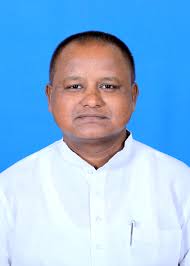 By Satya Narayan Misra in Bhubaneswar, June 15, 2024: From whiskey sipping and cigarette smoking, Naveen Patnaik cavorted with the likes of Mick Jagger & Jacqueline Kennedy, before changing track to a spartan lifestyle after joining politics in 1999. He is made of the stuff in which Bollywood can dabble.
By Satya Narayan Misra in Bhubaneswar, June 15, 2024: From whiskey sipping and cigarette smoking, Naveen Patnaik cavorted with the likes of Mick Jagger & Jacqueline Kennedy, before changing track to a spartan lifestyle after joining politics in 1999. He is made of the stuff in which Bollywood can dabble.
A great story, that goes beyond the eminently written biography of Ruben Banerjee in 2018. Naveen did not give up on cigarette smoking and whiskey-sipping but as Rajdeep Sardesai shares; he developed a passion for watching Netflix; unlike possibly any politician of note. He could be mysterious with his zombie-like demeanor in the last decade, and he can be a tad irritating with his clumsy Odia. But there can be no two opinions that he stands tallest in terms of grace, class, and rectitude in an age where bluff and bluster and baloney have become synonymous with politicians.
Mohan Majhi, in contrast, has humble origins and earthy moorings before taking over the baton from a patriarch in Odisha politics for 24 years. The moot point is if he will be a puppet boy of the center. Or will he charter a new course of development of Odisha blighting Naveen’s looming shadow as pro-poor and women-centric?
In trying to unlock the key of Ratna Bhandar, he must remember that he has to move beyond religious fundamentalism as his main charter. And remember how in the general elections Modi got a drubbing from the electorate in the areas surrounding the new Rama temple. Piketty and Banerjee in their survey of Indian elections from 1962 -2014 wrote, “Voters seem to be less driven by straightforward economic interests like employment and social issues like good education and health care than by sectarian interests and cultural priorities like caste and religion”. The general elections of 2024 seem to have called that bluff.
 Mr Majhi would profit by reading data on Odisha, particularly from the review report of Niti Ayogdocumenting the trends in different states on multidimensional poverty. Unlike branding the poor with a sweeping brush of BPL (Below the Poverty Line), MDPI (Multi-dimensional Poverty Index) looks at different dimensions of deprivation in parameters like education, health, and standard of living, with a weightage of 33% each.
Mr Majhi would profit by reading data on Odisha, particularly from the review report of Niti Ayogdocumenting the trends in different states on multidimensional poverty. Unlike branding the poor with a sweeping brush of BPL (Below the Poverty Line), MDPI (Multi-dimensional Poverty Index) looks at different dimensions of deprivation in parameters like education, health, and standard of living, with a weightage of 33% each.
The last report in 2023 uses data from surveys conducted by the NFHS (National Family Health Survey) in 2015-16 and 2019-2021 and proudly gloats over the fact that All India MDPI has come down from 24.8% in 2016 to 15.9% by 2021, taking out nearly 135 million from the jaws of grinding poverty. In the context of Odisha, it has come down from 29.3% to 15.68% by 2021, for which Naveen Babu’s slew of pro-poor policies must be complimented. However, a closer look at the disaggregated data tells a different story.
Stunting amongst children, which is the outcome of persistent hunger and poor sanitation is a dismal 35%, a figure close to many Sub-Saharan countries 30.7% of people suffer from poor nutrition. Despite marquee programs like Ujjawala, 65.9% of women are deprived of clean cooking fuel, depending on firewood and cow dung, causing severe respiratory problems for women.
This goes against the track record of Naveen Babu as being a Samaritan with his Mission Shakti, Mamta program, and 50% reservation to women in Panchayats. Sanitation is another area where Naveen Babu has a poor record, where the deprivation is as high as 40%. Pucca houses remain out of the reach of nearly 40.7% of the population.
Odisha has a population of 4.79 crores (2023), of which 22.8% are ST and 17.1% SC, unlike India where the total % of SC & ST is 23%. No wonder it had two CMs from the ST community, Hemanand Biswal, and Giridhar Gomang in the past. There is a huge disparity in terms of multidimensional poverty between the tribal districts and the coastal ones. For instance, it is as high as 45% in Malkangiri, 33.5% in Koraput, and 30.5% in Mayurbhanj as against 3.2% in Puri and 6.3% in Cuttack. Even in Sambalpur, a Western district of Odisha, the % of MDPI has come down from 24.3% in 2016 to 10% in 2021.
 The other serious problem afflicting Odisha is the rising trend of anemia among women. The NFHS V report shows that anemia among women in the reproductive age group has gone up from 51% in 2015-2016 to 64.3% in 2021. This is despite programs like ICDS and Poshan which pledge towards an Anemia Mukt Bharat. Nothing can be more ironic than the trends in anemia.
The other serious problem afflicting Odisha is the rising trend of anemia among women. The NFHS V report shows that anemia among women in the reproductive age group has gone up from 51% in 2015-2016 to 64.3% in 2021. This is despite programs like ICDS and Poshan which pledge towards an Anemia Mukt Bharat. Nothing can be more ironic than the trends in anemia.
The latest AMB (Anemia Mukt Bharat) reports that such high incidence is due to supply chain mismanagement, lack of accountability of the persons responsible for executing them, and scant use of technology to connect the stakeholders. It’s as high as 71.7% among the tribals. This should be Mohan Majhi’s first port of call and also ensure how funds under the Tribal Sub Plan are optimally spent.
In an illuminating report on the implementation of the Tribal Sub Plan, the Committee members pointed out that there is a nearly 25% gap in socioeconomic indicators of the ST and non-ST population. 35% of STs have lost their lands for different development programs and projects, which pushed the tribals into impoverishment. The mainstay of the economy of tribal people is agroforestry, supplemented by horticultural plantation and rearing of domestic birds and animals. 48% pursue shifting cultivation. Arable irrigated land is 33%.
Employment opportunities are insignificant and employment is mostly in the unorganized sector. The PESA Act of 1996 empowering Gram Panchayats with powers in resource management and decision making has not been implemented in letter and spirit. There were reports of MNCs and big corporations acquiring land through brute force, with connivance of the state. One only hopes that the new BJP government in Odisha does not facilitate the big corporates to harvest the mining fortunes in tribal districts, while displacing and depriving local tribals of their just entitlement.
The Report suggested that priority should be accorded to land-based composite irrigation projects, where land development, irrigation, and crops are integrated. Creation of employment opportunities and income and the development of infrastructure facilities must be given priority. It should be Mohan Majhi’s goal how to finalize a state-specific ST policy and vision document to bridge the gap between the tribal districts and coastal districts and bring in a clear accountability mechanism and use technology for proper tracking of targets. In terms per capita income Odisha is 12% lower than the national average.

It has, however, an edifying record in terms of fiscal discipline where its fiscal deficit was 2.8% compared to 6.4% of the Centre. It’s one of the few states that has a surplus in revenue budget and is well within the FRBM targets. Its Millet Mission & Mission Shakti had won Naveen justifiable plaudits. It will be Mohan Majhi’s remit how to bridge the huge gap between ST and non-ST population against both growth and development parameters.
As Mukhia of Odisha, his task is also cut out to bring down anemia among women, and stunting among children, improve the quality of public schooling, and health care, and create greater employment opportunities for Odisha as a whole.


Leave a Reply
Be the First to Comment!